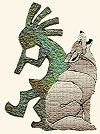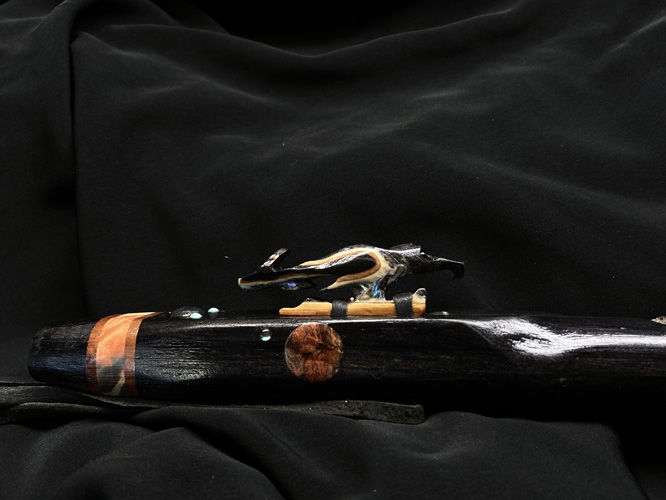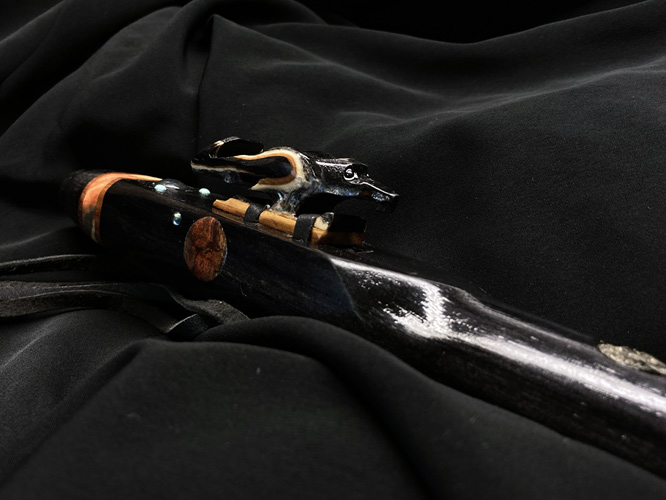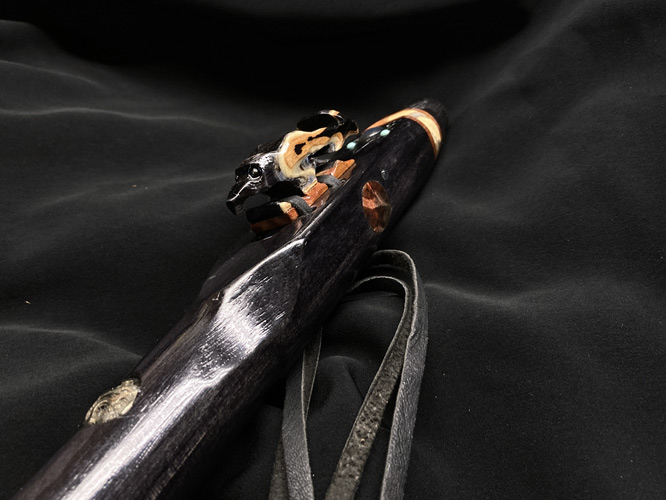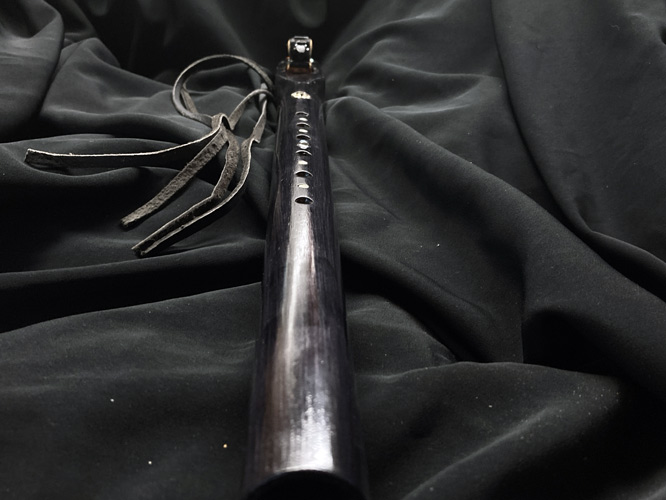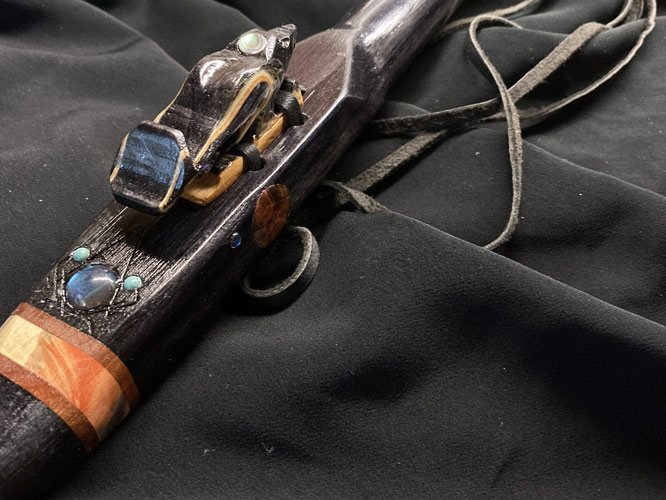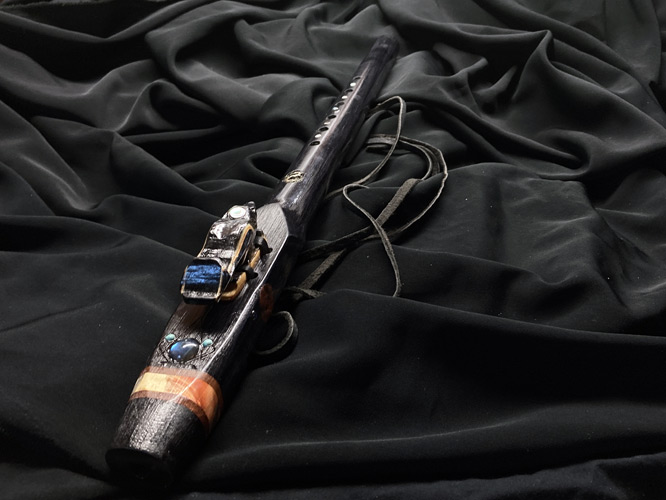$410.00
FREE DOMESTIC SHIPPING
Alowood Fm
SOLD
This wood is interesting material, and much to my frustration, now unavailable anywhere in the world. Back in 2006, a company found they could take plantation grown New Zealand radiata pine, and force starch through the planks, effectively turning a soft wood, into a hardwood. They then figured out they could colorize the starch, and this is an example of their ebony material. Originally intended as flooring, the company ceased operation in 2008 due to the crash of the housing market. I have enough for about 4 more flutes, despite a 12 year search for additional material.
This Fm instrument is 22 inches in length with a 7/8” bore diameter. Woods used in the construction, beginning at the mouthpiece include twice dyed box elder burl, between layers of redwood burl, capped with the alowood. Each side of the compression chamber includes 19mm disks of a different dyed box elder burl as well. The block, or bird, is cut from the alowood, bonded to Oklahoma red cedar for moisture control. Wing overlay consists of paua abalone, mappa burl, yew, and additional alowood.
Inlay, again from the mouthpiece, includes a 12.3mm dome cut labradorite flanked by 4mm turquoise dots. The disks to each side of the compression chamber are accented by 4mm moonstone dots as well. Forward from the true sound hole, the instrument includes a 120 million year old Russian ammonite. Specifically, this animal, in the nautilus family, was sourced on the banks of the Volga River near the city of Ulyanovsk (birthplace of Lenin) wherein iron pyrite replaced the bone structure, giving it the metallic characteristics. Further south from this, the finger holes are accented with four 4mm abalone cabs, and an additional 6mm dome cut labradorite cab. Lastly, the block includes an 8mm quartz capped abalone cab set to the crown, and 2.8mm hematite beads set as eyes.
Tuning was begun at a wood temperature of 77.1°F, an ambient temperature of 73.6°F, at sea level, with a humidity factor of 54%.
SOLD
